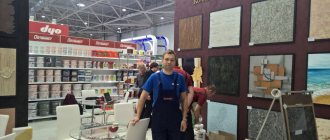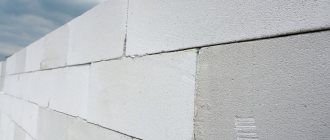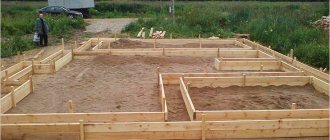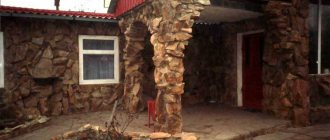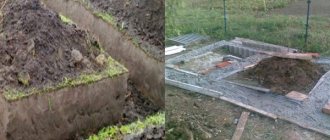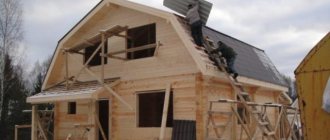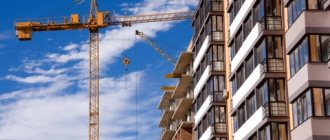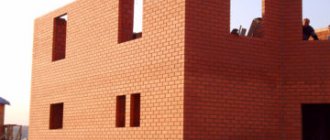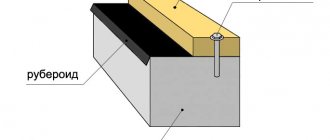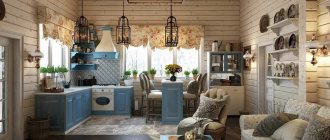When choosing a suitable project for a future home, developers primarily focus on the speed of installation work, because for a modern person, any delay seems to be a serious problem - these are the realities of our fast-paced life. It is also important that we all do not want to face unpleasant moments that can be caused by seasonal changes in weather, since this will negatively affect the deadline for the completion of the project, and the desire to quickly find a new home forces us to accelerate. That is why people have increasingly become interested in new technologies in the construction of private houses.
Modern technologies in construction
Now let's talk about the practical aspect, because it is also important. For example, you rent construction tools, the payment for which must be paid daily, who would want to overpay? This is where advanced solutions come to the rescue, allowing you to implement a typical project in just two or three months. So what do the authors of innovative developments offer us, and what can we successfully implement on our construction site?
Modern and popular technology
We would like to immediately draw your attention to the fact that new technologies and high-tech building materials are different concepts, although they are on the same plane . For example, foam concrete blocks, rounded wooden logs and OSB boards are products that have appeared not so long ago, but these are not house building technologies; the method of their installation is another matter. Here you will find a non-standard approach to the usual construction process and improved performance indicators of private houses, but let’s talk about everything in order.
Are the costs of creating an energy-efficient home really that high?
The use of innovative technologies in the construction of cottages is characterized by additional costs associated, first of all, with the use of modern thermal insulation materials. On average, the cost of constructing an object increases by approximately 10-15%.
But considering that the house is not being built for one year, but for at least 40-50 years, these costs will be completely justified, allowing you to significantly reduce heating costs. Considering that energy resources are constantly becoming more expensive, this approach will be completely appropriate and beneficial from an energy efficiency point of view.
It has already been proven: the costs associated with insulating a house pay off in literally 2-3 years; if innovative building materials are used, the payback period increases to 5 years. In comparison with the overall operational period of the cottage, these periods are insignificant to save on energy efficiency.
TISE
This abbreviation is more familiar to us under the name “folk”, also known as “adjustable formwork”, and in full it reads: Technology of Individual Construction and Ecology. This invention belongs entirely to our compatriots, which is doubly pleasant. The main advantage of this innovative approach is that you can build a house with your own hands, without the help of specialists.
Application of adjustable formwork technology
Principle of technology
Modern construction of private houses, based on this method, is characterized by the pouring of pile or columnar foundations, often equipped with a grillage. Your main tool at this stage will be a drill, which was specially designed for TISE.
The walls of such houses are assembled from hollow lightweight blocks, formed directly on the construction site using modular formwork, which must be periodically moved. The whole point of the construction method is that you fix the modules (forms) in the place where the wall of the house will be and pour concrete into them . When the solution hardens, the modules are dismantled and transferred to a new location.
Construction of walls according to TISE
pros
If you all decide to build such a structure, then you will certainly be pleased by the absence of so-called cold bridges, which modern developers are struggling with with varying success. Also, you don’t need a whole team of builders, because this kind of construction does not require more than 2–3 people, including the owner of the house, and even then only for individual processes (moving formwork, drilling soil).
Formwork dimensions
In this case, you do not have to rent or buy special equipment, which significantly reduces the construction cost. Moreover, you can independently choose the composition of the filler for the walls of such houses and combine materials (as an option - brick with concrete).
Innovative materials produced and sold on the Russian market
Companies specializing in the production of thermal insulation materials, truly valuing their customers and looking for access to new markets, are constantly improving their products.
Currently, in Russia, there are at least 7-8 types of innovative building materials, characterized by high physical, chemical, technical and operational properties.
Reinforced concrete wall panels with additional insulation
The basis of the structure is reinforced concrete with internal polystyrene foam insulation, which can significantly reduce the cost of construction and additional insulation of a country house.
Peat blocks
The production technology consists of forming special briquettes from recycled peat, with the addition of straw, sawdust, and wood chips. The main advantage is high thermal insulation and sound insulation properties.
Microcement
The basis of the material is a cement mixture, to which special polymers are added to ensure high strength and moisture resistance of the material used for protective and decorative finishing.
Fiber cement
The material consists of 90% cement mixture, with the addition of mineral components and reinforcing fibers. It has high strength and water resistance. Ideal for interior and exterior wall decoration.
Nanoconcrete
The basis of the material is concrete, with particles of carbon, silicon oxide, titanium dioxide and other binding components added to the composition.
This material has high fire resistance and increased strength. And it is considered one of the best energy-saving materials today.
Infrared thermal panels
During its production, special carbon threads with electrical conductivity are added to the plasterboard sheet.
The use of these panels in the construction of a country house allows you to stabilize indoor air humidity, maintaining it at an optimal level, and also distribute heat evenly.
Sandwich panels
The structural panel, which resembles a “sandwich” in its production technology, consists of two OSB boards with a layer of heat-insulating material between them. Thanks to the use of SIP panels, it is possible to build a low-rise residential building with high energy efficiency indicators in the shortest possible time.
Frame construction
Currently, we rarely resort to this technology for building houses, but this is most likely due to a lack of information among private developers, which can change in a short time, which means there is a prospect for its spread.
Peculiarities
After the foundation is poured, they begin to assemble the frame. This design consists of beam elements located horizontally, vertically and diagonally, and articulated with each other . As a rule, wooden or metal frame elements are used here - it all depends on the personal preferences of the home owners.
Assembling a wooden frame
Metal blanks are naturally stronger, but connecting them will require drilling technological holes, which can be replaced by welding, and this complicates the process, but we want to build a house quickly and without complications. Based on the intricacies of working with metals, wooden “skeletons” remain more popular. Most often, this is timber, which facilitates the construction of wooden houses using new technologies due to the correct geometry.
Construction of a frame structure
The walls here are a kind of cladding, and they can be built from various materials, with which they work according to new principles :
- The first principle is that walls on wooden frames, which can be built from OSB boards, are filled with any thermal insulation materials. For example, you can choose foam concrete, expanded clay, polyurethane foam or fiber insulation, again, as the owner of the house wishes.
- The second principle is prefabricated panels, which at the time of construction are equipped with insulation and waterproofing.
Prefabricated shield
Please note that the second option is more difficult to implement (we are talking about the fact that we want to build a home with little effort). It is quite difficult to assemble ready-made shields correctly without violating the technology. And without a crane it is impossible to lift such massive elements, and this significantly complicates the process and leads to its increase in cost.
Advantages
Any type of foundation is suitable for the construction of such buildings, no matter what soil it will be laid on, even if we are talking about problematic landscapes. There is also the possibility of quick redevelopment without incurring large costs. The same applies to extensions, with which you can easily increase the area of private houses - install additional frame elements and sheathe new walls.
For finishing you can use any materials, there are no restrictions.
Piles and beams constructed with closed cell insulation
Pile houses today are built mainly with hollow piles and beams. Meanwhile, this space can also be used for additional insulation of the foundation of the house, which allows you to achieve a higher R-value (thermal insulation).
A pile foundation insulated with insulators can solve many problems. In addition, massive piles and beams made from lumber at least 120 centimeters long will also allow you to build a stronger and more stable floor that will not sag, creak, or deteriorate as quickly from exposure to adverse weather conditions.
Piles and beams with closed cell insulation are the key to building highly durable houses; they are resistant to severe frost and floods. Closed cell insulation is far superior to fiberglass wadding and currently leads the industry in insulation cost.
Of course, for Russian developers, for whom every ruble counts, additional insulation of piles or foundation frames sometimes looks too expensive. However, in Western countries, where there are no alternatives to electric heating, and at the same time, electricity is much more expensive than here, this technology has already become in demand.
3D panels
New trends in the construction industry sometimes represent modified principles that appeared earlier, and with 3D panels, vaguely reminiscent of the method of assembling frame-panel houses.
Construction from 3D panels
Panels produced on an industrial scale are not prefabricated panels, but monolithic polystyrene foam slabs, pre-reinforced with reinforcing mesh on each side. They are connected to each other using metal rods that penetrate the structure diagonally and extend beyond its limits. It is not difficult to build a house from such blocks, because they are quite light in weight, and the assembly is strong and reliable.
Features and Benefits
There is no “skeleton” of the house in its classical sense, but instead there are panels connected by a rigid coupling and forming the load-bearing walls of the building . After their erection, the structure is covered with a “jacket” of concrete on each side of the mounted panels.
3D panel design
The polymer material from which modern panels are made makes it possible to reduce heat loss to a minimum, and this is an essential point in the construction of modern houses, both wooden and panel. You can also build a structure from SIP panels - these are also new materials in the construction industry. However, they are little used on private construction sites due to their large dimensions.
This material is mainly chosen for the installation of large-scale objects. If for some reason you still do not give up the idea of using SIP panels on your own site, it is better to order them from the manufacturer according to individual drawings, which will cost a pretty penny, and a considerable one.
Dye
The market offers a truly huge number of all kinds of interior paints. Water-based ones are considered the safest and non-toxic, while organic-based ones, when dry, form a denser, shiny layer. You can choose moisture-resistant paint, which is suitable for the kitchen, and vapor-permeable paint, which would be appropriate, for example, in the hallway.
As for decorative properties, paints come in glossy, matte and even embossed. The former are suitable for perfectly smooth surfaces, while the embossed one can hide roughness and small errors on the walls.
- Water-based paints have the “softest” chemical composition. Their other advantages include an attractive price and a huge selection of colors and shades. Disadvantages include instability to abrasion and high humidity.
- Acrylic paints are more tolerant of fumes, but drops or streams can destroy them. The most durable among water-soluble paints are latex paints. They can even be washed, but they are not very tolerant of ultraviolet radiation, and they are more expensive. Walls coated with acrylic-based paint are not afraid of sunlight, are non-toxic and do not fade for 15-20 years. The disadvantage of such paints is their long drying time.
- Alkyd paints are inexpensive, easy to use, have a wide range of colors and dry within an hour after application. True, alkyd-based dyes are short-lived - a year later, the walls may become stained and lose their original brightness. They also do not like sunlight, and most importantly, they are quite toxic. In connection with the last point, these paints are not recommended for bedrooms and children's rooms.
- Silicate paints are created on the basis of liquid glass with the addition of pigments and fillers. Most often they are used on verandas, balconies, and basements - where resistance to moisture and temperature changes is required.
- Silicone paints are vapor-permeable, have dirt-repellent properties, are not afraid of water and create a fairly durable coating layer. It is not surprising that their service life is a quarter of a century. Silicone paints can be used to decorate bathroom walls, use them in the hallway, and in the kitchen. It should, however, be remembered that the bumps and depressions on walls covered with this relatively new type of paint and varnish products will become more noticeable.
- Oil paints with drying oil as a base are rarely used today for interior decoration. The reason is the harmful components that are used in their production. In addition, oil compositions take a long time to dry, do not allow surfaces to “breathe”, and can bubble and crack. The merits of oil paints include, perhaps, their affordability. Because of this, oil paints can be useful in utility rooms and utility rooms - they are used to paint pipes, window frames, and heating radiators.
- Enamel is often called upon to help when renovations are underway. Among the advantages of enamel dyes are a budget price, aesthetics (it forms a smooth, glossy film), and durability that exceeds the durability of oil and alkyd paints. Enamel is called a universal coating because it easily applies to any surface, be it brick, concrete or wood, and dries within 24 hours. Paint resists moisture well, which is why bathroom walls are sometimes covered with enamel. But we must not forget that enamels are fire hazardous, which is why they should not be used near a stove. The durability of enamel paint depends on the type and ranges from 10 to 15 years.
Permanent formwork
One of the most well-known technologies, often used in private construction due to its availability and ease of implementation.
Ready-made house using permanent formwork technology
Construction principle
Like TISE technology, the basis of the principle here is that you can quickly build a house without a team of craftsmen.
Fixed polystyrene foam formwork
Permanent formwork can be formed from block or panel elements, which during operation are placed along the perimeter of the base at a certain distance from each other, forming a partition. Reinforcement is placed in the cavity between the blocks and concrete is poured.
pros
As mentioned earlier, you can build such a house yourself, which will save you a lot of money. Helpers may only be needed at the stage of pouring the foundation and when installing the floors; otherwise, you can handle the rest yourself. At the same time, by choosing the right filler for wall formwork, you don’t have to worry about additional thermal insulation.
It turns out that building houses can be inexpensive and quite simple, and we are talking here about both block structures and their wooden counterparts. Knowing and applying the latest technologies, building a high-quality home today will not be difficult.
No. 3. Facing brick
Brick has always been one of the most popular materials for facade finishing. It is clear that for these purposes, not ordinary building bricks are used, but special decorative bricks, which are called facade, facing or facing.
Depending on the composition and production method, facing bricks are divided into the following groups:
- clinker;
- ceramic;
- hyper-pressed;
- silicate.
Each of these types has its own performance qualities, but they are united by an excellent appearance, a wide variety of shades, textures (can be glazed, with mineral chips or a matte surface) and shapes (there are bricks in the shape of a parallelepiped, and there are shaped ones in a figured form). In addition, all bricks have excellent resistance to negative environmental factors.
Clinker brick
Quite expensive clinker bricks are produced from special plastic grades of clay by pressing and firing. Natural dye can be added to the mass. In terms of overall performance qualities, this is the best option for facing bricks.
Advantages:
- high mechanical strength;
- durability;
- frost resistance. The material can easily withstand up to 300 freezing/thawing cycles without losing its basic properties;
- resistance to direct sunlight and high temperatures;
- resistance to aggressive substances;
- low water absorption coefficient;
- environmental friendliness;
- aesthetics and large selection;
- No special care or maintenance is required - the façade is simply easy to clean.
Among the disadvantages are the high price, considerable weight and difficult installation. An alternative to this material is clinker tiles, which are made according to almost the same principle, can have a lot of relief and color options, but at the same time have a small thickness, and therefore less weight.
Ceramic brick
Ceramic brick, made from clay by firing it, is well known to each of us. Its facing variety amazes with a wide variety of colors and textures, but this is not the only advantage of the material.
Advantages:
- durability;
- environmental friendliness;
- good sound and heat insulation characteristics;
- resistance to temperature changes, sunlight, fire;
- relative cheapness.
Flaws:
- not always accurate geometry;
- there may be inclusions of limestone, which, absorbing moisture, will stand out in a darker color;
- the possibility of shedding or destruction if errors were made in the choice of solution, product brand or installation;
- high level of water absorption, which can reach 10%, reducing the frost resistance of the product.
Hyperpressed brick
This material is obtained using cement, shell rock and some special additives using the semi-dry pressing method. Outwardly, it resembles ceramic brick, but in many respects it is ahead of it.
Advantages:
- durability and strength;
- good geometry;
- frost resistance;
- a large assortment;
- ease of processing.
The water absorption of such bricks is at an average level - about 5-6%, and the obvious disadvantages of the material include high thermal conductivity, the ability to change color over time and heavy weight, which affects transportation.
Sand-lime brick
Facing sand-lime bricks are made from a cement-sand mixture using the autoclaving method; special additives can be used. Due to the ease of production and low cost of raw materials, sand-lime brick is considered one of the most affordable materials among other types of bricks.
Advantages:
- high strength;
- precise geometry;
- environmental friendliness;
- good soundproofing qualities;
- low price.
Flaws:
- Compared to other types of facing bricks, sand-lime brick does not have the best decorative qualities;
- heavy weight;
- low thermal insulation qualities;
- high level of water absorption (more than 15%);
- low frost resistance.
